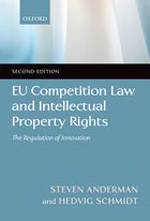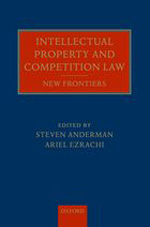EU Competition Law and Intellectual Property Rights
the regulation of innovation
- ISBN: 9780199589968
- Editorial: Oxford University Press
- Fecha de la edición: 2011
- Lugar de la edición: Oxford. Reino Unido
- Edición número: 2nd ed
- Encuadernación: Rústica
- Medidas: 23 cm
- Nº Pág.: 392
- Idiomas: Inglés

Widely read and appreciated in its first edition by students, academics and junior practitioners, this was the first book to offer an accessible introduction to the interface between competition law and intellectual property rights. Now fully updated, but retaining the accessible approach, it continues to represent an ideal gateway to this increasingly dynamic interface, offering a sound introduction to the topic based on thorough legal analysis. It provides a foundation to EU competition law rules as they relate to intellectual property rights, and explores how such a template can be applied to existing intellectual property rights and adapted to new technologies such as telecommunications and information technology. It demonstrates how, both under the EU law and as a matter of economic policy, EU competition law must provide a set of outer limits to, and a framework of rules which regulate, the exploitation and licensing of intellectual property rights. A group of landmark cases since the first edition - the Microsoft case and its predecessor concerned with database rights, the IMS case - has extended the scope of Article 102 TFEU to a refusal to license interface codes. Article 102 has also been applied in the Astra Zeneca case to regulate the behaviour of pharmaceutical companies and the pharmaceutical sector has recently experienced a sectoral enquiry. Finally, the field of industrial standards, patent ambushes and FRAND obligations has become the subject of competition law scrutiny. Under Article 101 TFEU, the modernisation reforms and the new Technology Transfer Block Exemption Regulation 772/2004 together with the Technology Transfer Guidelines have quite radically reformed the method that lawyers must use when analysing the limits of clauses in intellectual property licensing. It requires greater economic understanding, offers less legal certainty but allows more flexibility than its predecessor. The book offers a comprehensive insight to these new developm








